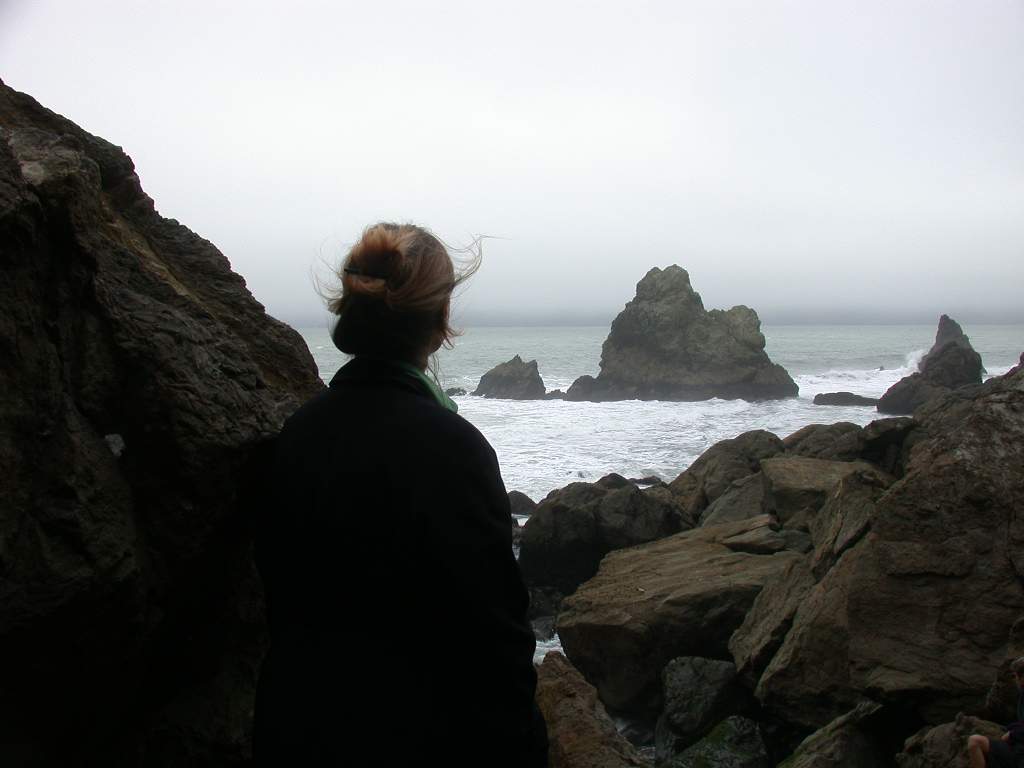Thomas Hardy, Samual Coleridge and John Keats can all be considered Romantic poets. Hardy may be referred to as a “disillusioned romantic,” but he still writes about romantic subject and delves into the deeper levels of the human psyche – similar to the ways that Coleridge and Keats
do. These men ask questions that are so profound that the frustration in their poems is palpable. Hardy writes many poems about the futility of sending young men off to war and asking God if this world is just “hap.” These poems share a lot in common with the tone of Coleridge’s “Rime of the Ancient Mariner.” Nature is romantic and nature is hope but nature is also a symbol for life and death.
Hardy’s “The Darkling Thrush” and Coleridge’s “Rime of the Ancient Mariner” possess an innate relationship with Keats’ “Ode to a Nightingale.” Man awakening to nature plays powerful roles in each poem, but as similar as the styles are, each man brings his own interests in his play. Hardy writes of nature inspiring hope via subjectivity and its impact by the subconscious. Coleridge writes of nature eliciting hopelessness but killing
nature is what truly kills hope. Keats writes of the hopelessness in trying to understand the song of a bird, of nature – as he can only be inspired by it; never able to actually be it.
“The Darkling Thrush” is somewhat uncharacteristic of Hardy because it leaves the message that the thrush i.e. nature, inspires hope. However, hope or the more commonly written theme of futility or despair is always written about in a romantic style. So what Hardy does in this poem is just as moving to a reader as his other works. When a poet uses associations with romantic elements, like a bird singing of “some blessed hope,” (31) he is using the natural to appeal to the reader. Usually, Hardy employs non-romantic elements in a poem. He gives his poetry a romantic feel by inserting subjectivity and the unconscious.
In addition, Hardy is in the transitional period between the Romantic Era and the Modern Era; his way of viewing the world is unique. The poem is from December 31st – the turn of the century and a new mode of thinking. Hardy incites nature as the result from a breakage from the aesthetic,
consciousness and objectivity (the Victorian Age) and a blending with the Romantic Era. For instance, Hardy examines the severity of life and death but reflects on the outer world and detaches himself, as he does in “The Breaking of Nations.” He wants to know if this world is just “hap.” The persona in “The Darkling Thrush” shares this view. The environment is personified, but the personification represents death with words like, “sharp,” (9) “corpse,” (10) “crypt,” (11) “death-lament,” (12) “shrunken hard and dry,” (14) “fervourless,” (16) “bleak,” (18) and “growing gloom” (24). This list echoes the mood of the poem: the speaker is surrounded by melancholy until he/she feels an internal change caused by nature.
The speaker in “Rime of the Ancient Mariner” has a similar experience with the Albatross and the ocean. Instead of feeling the “broken lyres” (6) as if the poetry of the earth has died, as in Hardy’s poem, Coleridge’s speaker sees “water, water everywhere but not a drop to drink” (39-40). After the mariner kills the Albatross, the sea is turbulent and death plagues his boat. By wearing the Albatross around his neck, the mariner is forced to think of his own mortality. He feels a similar gloom seen in “The Darkling Thrush.” As the Albatross is removed from the mariner, Coleridge reveals a personal escape from the unbearable bird. It is this release that brings forth a spiritual awakening and a respect for nature to the speaker.
“Ode to a Nightingale” shows an awakening to nature and inner conflict from Keats’ persona, as well. Here, too, the tone of the poem is of a “drowsy numbness” (1) that is “emptied” and “dull” (3). The speaker feels paralyzed while he sees a “light-winged Dryad” flitting and springing around with so much more life. He longs to “leave the world unseen,” (19) which he thinks he can do by drinking, so that he may enjoy the “country green” (13) and the “deep-delved earth” (12). However, he can not see what the nightingale sees and no amount of wine will change this because Keats is unable to leave the real world behind to understand the secret language of the nightingale. He can hear the bird “pouring forth thy soul abroad in such an ecstasy,” (57-58) and he can immortalize the bird, but he is a person who is enraptured and inspired both philosophically and creatively by the bird; he can never become the bird or of a nature that truly understands it.
What is so interesting about the correlation between these poems is the relationship between the three speakers’ inner turmoil and the birds. These relatively small, simple and dull creatures elicit strong emotions from the speakers. Hardy, Coleridge and Keats all express the desire to escape from the human world to find a utopian world of art. The subjects (the birds) inspire the thought that through appreciating the beauty of nature, like the birds and their songs, the reader (speaker) can be a witness to an experience of the sublime. The sublime may even be so powerful for the poet that the experience is shared by the reader. This sharing of the grandiose lifts the reader not just to new heights of creative, world and self comprehension but to the power that nature has over mankind and how it turns inner conflict into spiritual awakening.

